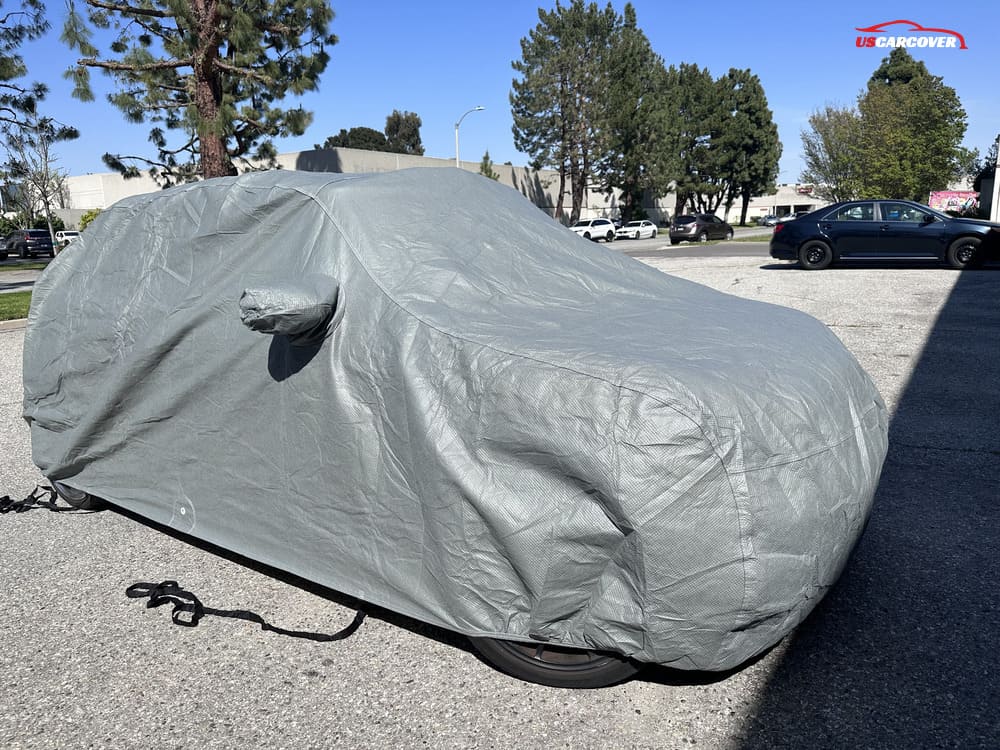
Learn how to properly store your car cover to extend its lifespan and maintain its effectiveness. Discover best practices for folding, cleaning, and protecting your car cover when not in use.
As someone who's spent years in the automotive industry, I've seen firsthand how crucial car covers can be for maintaining a vehicle's condition. Whether you're using a cover to protect your car from harsh weather, UV rays, dust, or debris, it plays an essential role in preserving the finish and integrity of your vehicle. However, what many car owners overlook is the importance of properly storing their car cover when it's not in use.
Improper storage can quickly degrade the material, leading to premature wear, tear, and loss of functionality. Just like your car requires care, so does your car cover. Storing it the right way will ensure that it’s ready to provide maximum protection when you need it. In this guide, we’ll walk through expert-level tips on how to clean, fold, and store your car cover correctly, so you can extend its lifespan and maintain its effectiveness. By the end of this article, you’ll understand why proper storage is a critical part of car care that shouldn’t be ignored.
From avoiding common mistakes to selecting the best storage environment, I’ll share insider knowledge on keeping your car cover in top condition, ensuring it continues to serve its purpose for years to come.
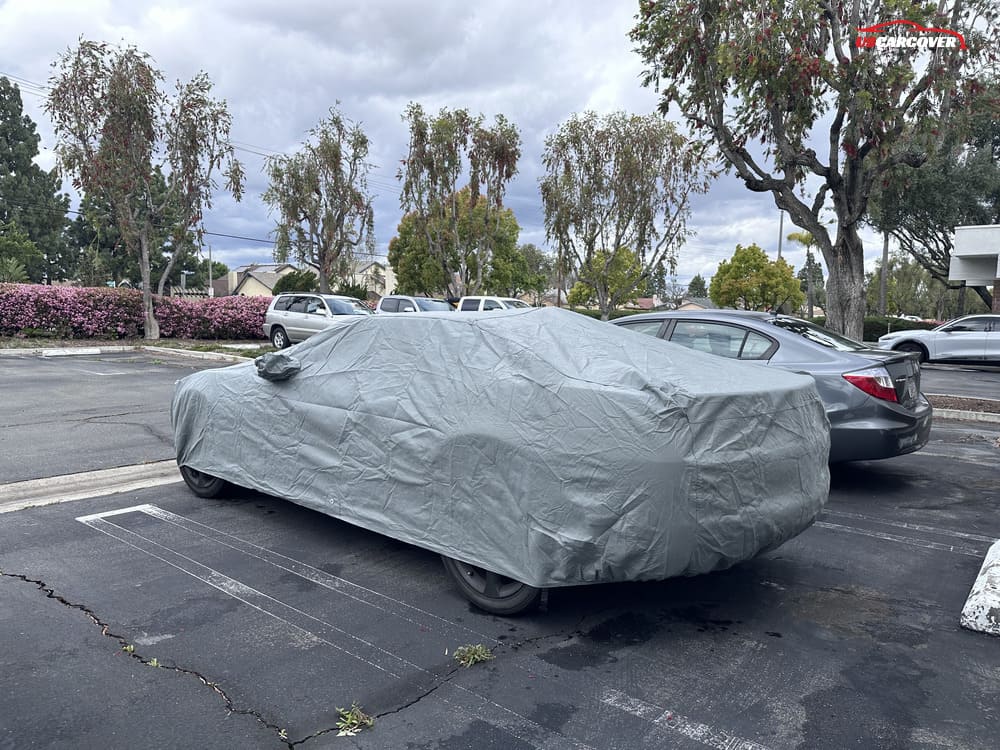
Why Proper Storage is Important
Car covers are indispensable for safeguarding your vehicle against environmental elements. However, the effectiveness of a car cover extends beyond just its initial quality; it heavily relies on proper storage. When you overlook the importance of correctly storing your car cover, you risk compromising its ability to perform its protective duties.
Improper storage can lead to a range of issues. For instance, if a car cover is stored while still dirty or damp, it can become a breeding ground for mold and mildew. These conditions not only damage the cover itself but can also lead to unpleasant odors and potential contamination of your vehicle. Additionally, exposure to direct sunlight or extreme temperatures during storage can cause the cover’s material to degrade, leading to cracks and tears that undermine its protective capabilities.
The investment in a high-quality car cover is significant, and maintaining it through proper storage is crucial for protecting this investment. By ensuring that your cover is stored in an ideal environment—cool, dry, and away from direct sunlight—you enhance its durability and effectiveness. Proper storage helps prevent wear and tear, ensures the cover remains clean, and prolongs its overall lifespan.
In summary, understanding and implementing proper car cover storage practices is essential not only for preserving the cover itself but also for ensuring that your vehicle remains shielded from the elements. In the following sections, we’ll delve into specific techniques and best practices for storing your car cover, so you can keep it in top condition and continue to enjoy its benefits.
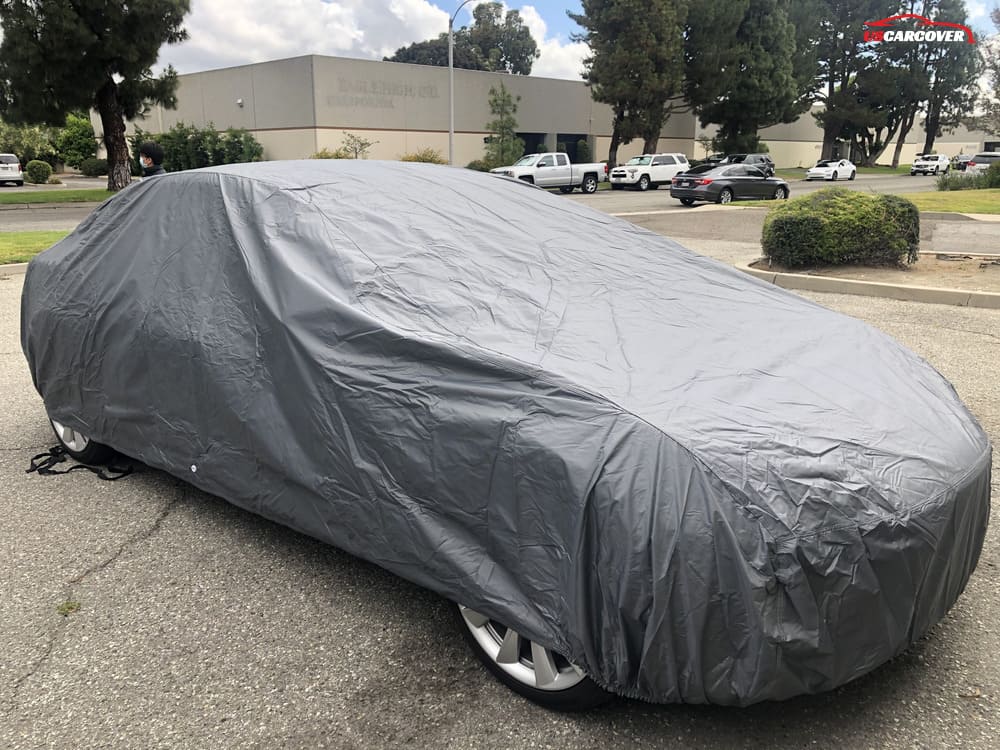
Step-by-Step Guide to Storing Your Car Cover
Proper storage of your car cover is essential for maintaining its functionality and extending its lifespan. Follow these detailed steps to ensure your cover remains in optimal condition when not in use.
2.1. Clean Your Car Cover Before Storage
Before storing your car cover, it’s crucial to ensure it’s thoroughly cleaned. Dust, dirt, and grime can cause damage to the cover material over time.
- Importance of Cleaning: Residual dirt and grime can lead to abrasion and material degradation, impacting the cover’s performance and potentially damaging your vehicle's finish.
- Cleaning Instructions: The cleaning method depends on the cover’s material. For fabric covers, use a mild detergent and warm water. Gently scrub with a soft brush to remove stains. For waterproof covers, follow the manufacturer's instructions, often involving a spot-cleaning method.
- Best Products and Tools: Use gentle detergents and soft brushes to avoid damaging the cover. Avoid using harsh chemicals or bleach, as these can degrade the material.
2.2. Allow the Cover to Dry Thoroughly
After cleaning, it’s vital to allow your car cover to dry completely before storing it. Storing a damp cover can lead to mold and mildew growth, which can ruin the cover and potentially affect your vehicle.
- Risks of Damp Storage: A damp cover provides a perfect environment for mold and mildew, which can cause unpleasant smells and damage both the cover and your car.
- Recommended Drying Techniques: Air dry the cover in a well-ventilated area, avoiding direct sunlight which can cause fading or damage. Ensure it is completely dry before proceeding to the next step.
2.3. Properly Fold the Car Cover
Correct folding is essential to prevent wrinkles, creases, and material stress that can weaken the cover over time.
- Step-by-Step Folding: Lay the cover out on a clean, flat surface. Fold it lengthwise, then fold it again to match the width. Finally, fold it into a compact shape that’s easy to handle.
- Tips for Efficient Folding: For large covers, enlist help to avoid awkward folds. Use the cover’s seams as guides to ensure even, symmetrical folds.
2.4. Choose the Right Storage Location
Selecting an appropriate storage location is key to preserving your car cover’s condition.
- Ideal Storage Environments: Store your cover in a cool, dry place that is free from extreme temperatures and direct sunlight. A dry garage or storage box is typically ideal.
- Avoid Unfavorable Conditions: Do not store the cover in damp areas such as basements or areas prone to high humidity. Also, avoid placing the cover near chemicals or sharp objects that could damage it.
By following these detailed steps, you’ll ensure your car cover remains in excellent condition, ready to protect your vehicle whenever you need it. Proper cleaning, drying, folding, and storing are crucial practices that contribute to the longevity and effectiveness of your car cover.
Do’s and Don’ts of Storing Car Covers
When it comes to storing your car cover, adhering to specific do’s and don’ts can make a significant difference in maintaining its quality and extending its lifespan. Here’s a comprehensive list to guide you:
Do’s
- Clean Regularly: Always ensure your car cover is clean before storing it. Dirt, dust, and grime can lead to material degradation and mold growth if left untreated. Regular cleaning helps maintain the cover’s integrity and effectiveness.
- Store in a Dry Place: Choose a dry storage area to avoid issues related to moisture. A dry environment prevents mold and mildew from developing, which can damage both the cover and your vehicle.
- Fold Properly: Follow proper folding techniques to avoid wrinkles and creases. Proper folding prevents stress on the material and ensures the cover retains its shape, making it easier to use and store.
- Use Storage Accessories: Consider using a breathable storage bag or box. These accessories help protect the cover from dust and contaminants while allowing airflow to prevent moisture buildup.
Don’ts
- Don’t Store When Wet: Never store your car cover while it’s still damp or wet. Moisture trapped in the cover can lead to mold and mildew growth, compromising its protective qualities and causing unpleasant odors.
- Don’t Expose to Direct Sunlight: Avoid storing your car cover in direct sunlight. Prolonged exposure can cause the material to fade and degrade, reducing its effectiveness and lifespan.
- Don’t Place Heavy Objects on Top: Avoid putting heavy items on top of the stored cover. Heavy objects can cause compression damage and distort the cover’s shape, leading to wear and tear.
- Don’t Store in Humid or Chemical-Laden Areas: Keep the cover away from humid environments such as basements or areas with high moisture. Also, avoid storing it near chemicals or sharp objects that could cause damage.
By following these guidelines, you’ll ensure that your car cover remains in top condition and continues to provide excellent protection for your vehicle. Proper storage not only preserves the cover’s functionality but also protects your investment in vehicle care.
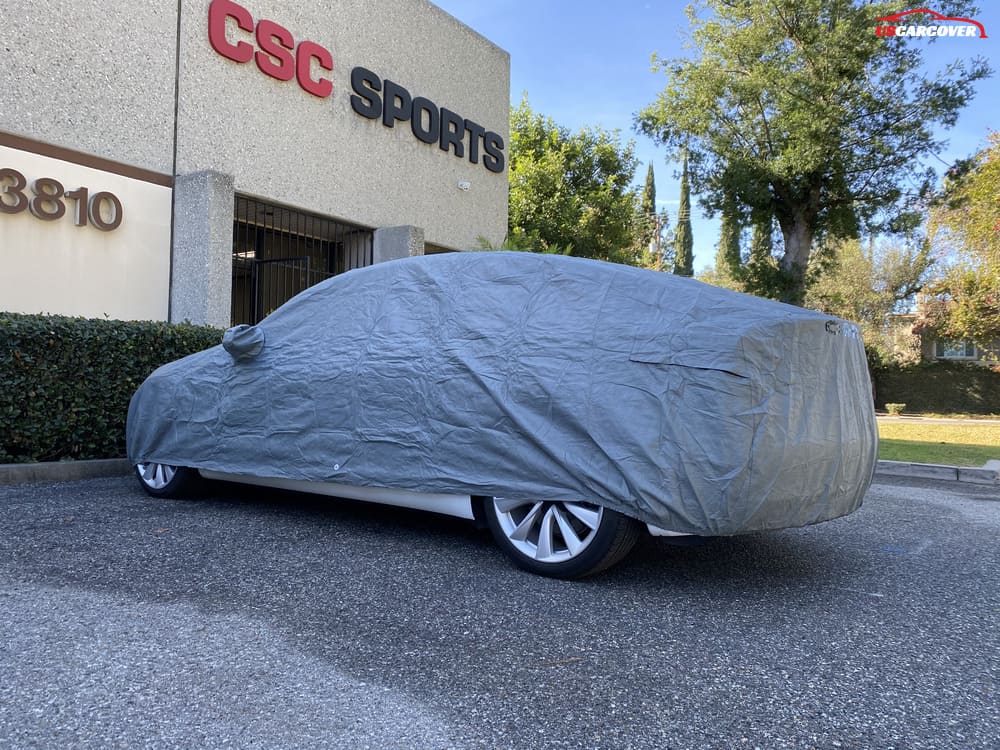
Choosing the Right Storage Accessories
Selecting the right storage accessories is essential for maintaining the quality and effectiveness of your car cover. The right accessories not only protect the cover from external elements but also ensure that it remains in good condition over time. Here’s a guide to help you choose the best storage solutions:
4.1. Storage Bags
- Breathable Storage Bags: Opt for breathable storage bags designed specifically for car covers. These bags allow air circulation, which helps prevent moisture buildup and mold growth while keeping the cover clean and protected from dust.
- Material and Size: Choose bags made from durable, non-abrasive materials that are sized appropriately for your cover. A well-fitting bag prevents the cover from shifting and developing wrinkles.
- Additional Features: Some storage bags come with zippered closures or handles for easy handling. These features can add convenience and help you manage the cover more effectively.
4.2. Storage Bins and Boxes
- Plastic Storage Bins: For long-term storage, plastic bins with secure lids are a great option. They offer protection from dust, dirt, and moisture, while also being stackable to save space.
- Ventilated Boxes: If you prefer using a box, opt for one with ventilation holes to allow airflow and prevent the buildup of moisture. Ensure the box is sturdy and large enough to accommodate your car cover without compressing it.
- Avoid Metal Containers: Metal bins are generally not recommended as they can cause condensation and rust, which can damage your car cover.
4.3. Moisture Absorbers
- Silica Gel Packs: Consider using silica gel packs or moisture absorbers inside your storage bag or bin. These products help keep the storage area dry by absorbing excess moisture, which reduces the risk of mold and mildew.
- Desiccant Packs: Place desiccant packs in the storage area to maintain a low humidity environment. These packs are particularly useful in areas with high humidity or fluctuating moisture levels.
4.4. Storage Environment
- Climate Control: Ideally, store your car cover in a climate-controlled environment where temperature and humidity are regulated. This helps prevent material degradation and maintains the cover’s effectiveness.
- Safe Placement: Ensure that the storage area is free from sharp objects, chemical fumes, and extreme temperatures. A well-chosen location will safeguard your cover from potential damage.
By selecting the right storage accessories and environment, you’ll help maintain your car cover’s quality and functionality. Proper accessories not only protect the cover from physical and environmental damage but also contribute to its overall longevity and effectiveness in protecting your vehicle.
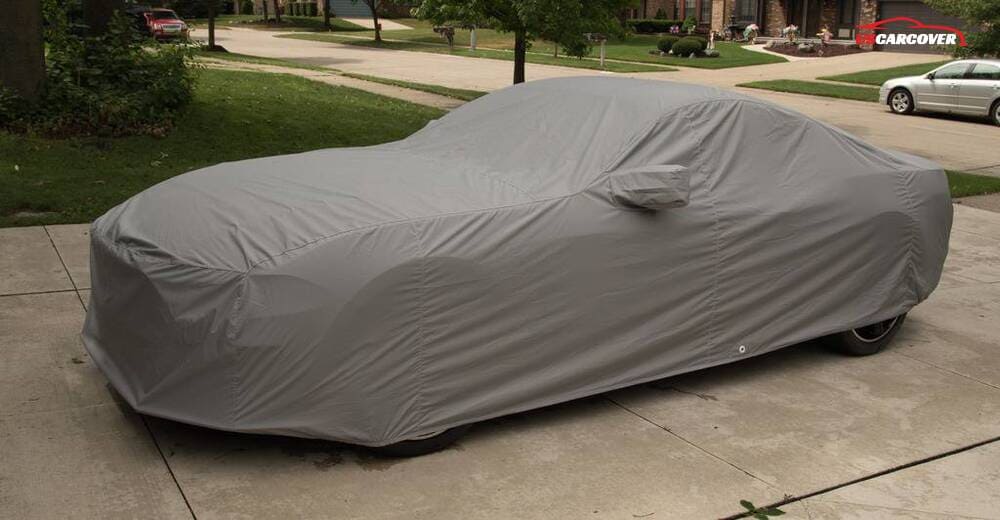
Common Mistakes to Avoid When Storing Car Covers
Even with the best intentions, it’s easy to make mistakes when storing your car cover that can impact its effectiveness and longevity. Here are some common pitfalls to avoid:
5.1. Storing While Dirty
- Impact on the Cover: Leaving your car cover dirty or dusty before storage can lead to material degradation and mold growth. Residual grime can cause abrasion and compromise the cover’s protective properties.
- Best Practice: Always ensure your cover is thoroughly cleaned before storage. Follow the cleaning instructions based on the cover’s material to remove any dirt, stains, or residues.
5.2. Forgetting to Check for Damage
- Potential Problems: Failing to inspect the cover for tears, holes, or wear and tear before storing it can lead to further damage over time. Small issues can become significant problems if not addressed promptly.
- Inspection Routine: Before storing, carefully check your cover for any signs of damage. Repair any small tears or weak spots, or consider replacing the cover if it’s extensively damaged.
5.3. Using Unsuitable Storage Areas
- Risks of Poor Storage Locations: Storing your cover in damp or high-humidity areas like basements can lead to mold and mildew growth. Similarly, extreme temperatures or direct sunlight can cause material degradation.
- Ideal Storage Locations: Choose a dry, cool, and well-ventilated area for storage. Avoid places with high moisture levels or exposure to direct sunlight to maintain the cover’s condition.
5.4. Overlooking the Importance of Drying
- Consequences of Damp Storage: Storing your cover while it’s still damp or wet can result in mold and mildew. Moisture trapped in the cover can cause significant damage over time.
- Proper Drying: Always allow your cover to air dry completely before folding and storing. Ensure it’s fully dry to prevent moisture-related issues.
5.5. Using Improper Storage Containers
- Impact of Incorrect Containers: Storing your car cover in non-breathable or metal containers can lead to moisture buildup and rust, which can damage the cover.
- Recommended Containers: Use breathable storage bags or ventilated plastic bins to prevent moisture accumulation. Choose containers that protect against dust and contaminants while allowing airflow.
5.6. Neglecting Periodic Checks
- Importance of Regular Inspections: Neglecting to periodically check on your stored car cover can result in undetected damage or degradation. Regular checks help ensure that the cover remains in good condition.
- Inspection Frequency: Make it a habit to inspect your cover every few months, or before and after seasonal changes. Look for signs of mold, dirt, or wear and address any issues promptly.
By avoiding these common mistakes, you can ensure that your car cover remains in excellent condition and continues to provide effective protection for your vehicle. Proper care and attention to detail in storage practices will extend the life of your cover and preserve its functionality.
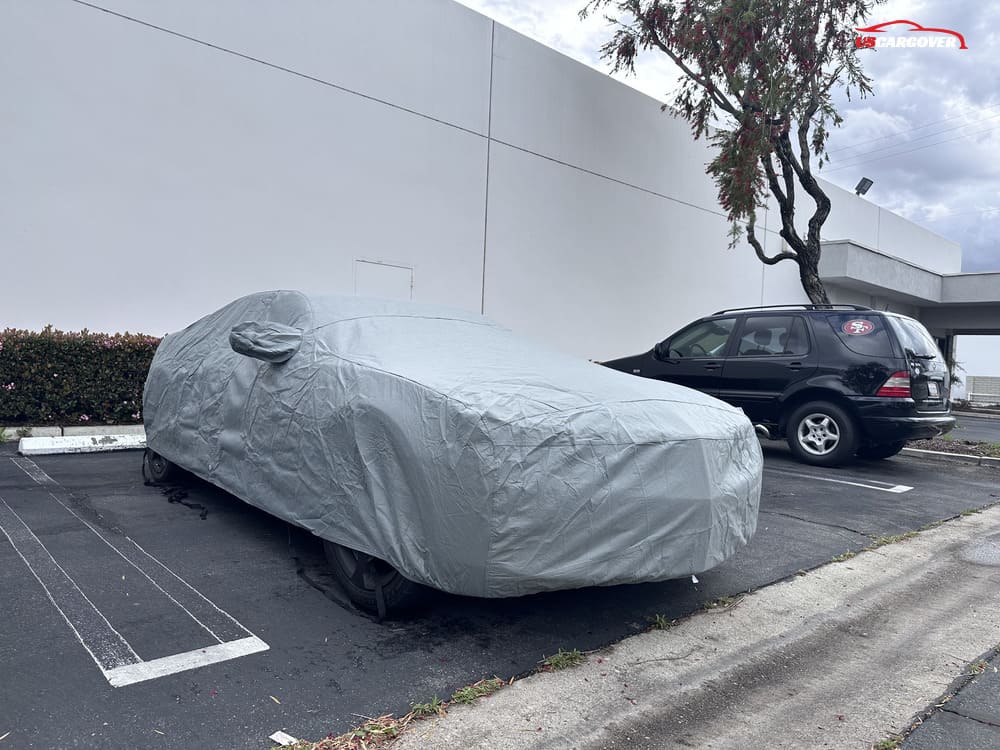
How Often Should You Inspect Your Stored Car Cover?
Regular inspections of your stored car cover are crucial for maintaining its condition and ensuring it continues to protect your vehicle effectively. Here’s a guide on how often you should check on your cover and what to look for:
6.1. Importance of Periodic Checks
- Preventive Maintenance: Regular inspections help catch any potential issues before they become serious problems. By addressing mold, tears, or dirt early, you can prevent further damage and maintain the cover’s protective qualities.
- Preserve Effectiveness: Keeping a close eye on the condition of your cover ensures that it remains in top shape, ready to offer the best protection for your vehicle whenever needed.
6.2. Recommended Inspection Frequency
- Every Few Months: Aim to inspect your car cover every three to four months, especially if it’s stored for extended periods. This frequency allows you to address any issues that may have arisen from changes in environmental conditions.
- Before and After Seasonal Changes: Conduct thorough inspections before and after major seasonal changes, such as transitioning from winter to spring or summer to fall. This is particularly important if the cover was exposed to harsh weather conditions.
- After Prolonged Storage: If the car cover has been stored for an extended period, such as over the winter or during a long-term absence, check it thoroughly before use. Look for any signs of damage or degradation that may have occurred during storage.
6.3. What to Look For During Inspections
- Signs of Mold or Mildew: Check for any signs of mold or mildew. These issues can cause unpleasant odors and damage the cover’s material. If detected, clean the cover according to the manufacturer’s instructions.
- Material Integrity: Look for any signs of tears, rips, or weak spots. Small issues can be repaired promptly to prevent them from worsening.
- Dust and Dirt Accumulation: Assess the cover for dust or dirt buildup. If the cover appears dirty, clean it before storing it again to prevent long-term damage.
- Fading or Wear: Examine the cover for any signs of fading or wear due to exposure to light or other environmental factors. If significant wear is noted, consider replacing the cover to ensure optimal protection for your vehicle.
6.4. Addressing Issues Found During Inspections
- Repair Small Damages: For minor tears or weak spots, use appropriate repair methods or products. If the damage is extensive, consult the manufacturer or consider replacing the cover.
- Clean and Dry: If mold or mildew is detected, clean and thoroughly dry the cover before storing it again. Follow manufacturer guidelines for cleaning and ensure the cover is fully dry.
- Replace If Necessary: If the cover shows significant wear or is beyond repair, replace it with a new one to ensure continued protection for your vehicle.
Regular inspections and maintenance of your car cover will help you catch and address any issues early, ensuring that your cover remains effective and in good condition. By following these guidelines, you can keep your cover in optimal shape and continue to protect your vehicle effectively.
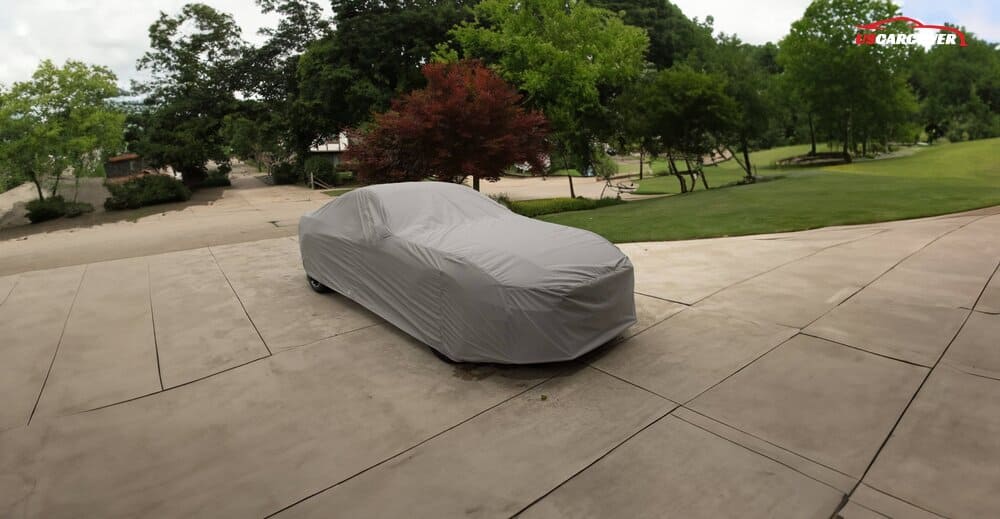
Related Posts: Best Car Covers for Hot Weather: Ultimate UV Protection for Your Vehicle
Conclusion
Properly storing your car cover is a crucial aspect of vehicle care that often goes overlooked. As someone deeply immersed in the automotive industry, I can attest to the significant impact that meticulous storage practices can have on the longevity and effectiveness of your car cover. By following the detailed steps and guidelines outlined in this guide, you’ll ensure that your cover remains in top condition, ready to provide optimal protection for your vehicle whenever needed.
To recap, effective storage begins with a clean cover. Regular cleaning prevents damage from dirt and grime, while thorough drying stops mold and mildew from taking hold. Proper folding and choosing the right storage location are key to maintaining the cover’s shape and material integrity. Additionally, utilizing suitable storage accessories and avoiding common mistakes will further enhance the cover’s lifespan.
Regular inspections play a vital role in preserving your car cover’s functionality. By checking for signs of wear, mold, or damage periodically, you can address issues promptly and maintain the cover’s protective qualities.
In summary, investing a little extra effort into the proper storage of your car cover pays off by extending its life and ensuring it continues to safeguard your vehicle effectively. Embrace these practices to protect not just your car cover, but your vehicle as well, keeping it in pristine condition and ready to face any environmental challenges.
By incorporating these best practices into your vehicle care routine, you’ll maintain your car cover’s performance and enjoy peace of mind knowing that your vehicle is always well-protected.
FAQ Section
1. How long can a car cover be stored?
A car cover can be stored for extended periods if it is properly cleaned and dried before storage. Generally, it’s best to inspect the cover every three to four months and ensure it is in good condition. For covers used seasonally, ensure they are thoroughly checked and cleaned before being put away for the off-season.
2. Can I store my car cover in a bag?
Yes, storing your car cover in a breathable storage bag is an excellent option. Breathable bags protect the cover from dust and contaminants while allowing for air circulation, which helps prevent moisture buildup and mold growth. Avoid using non-breathable plastic bags, as these can trap moisture and cause damage.
3. What should I do if my car cover smells musty after storage?
If your car cover has developed a musty odor after storage, it may have been exposed to moisture or humidity. Clean the cover thoroughly using appropriate methods for its material. After cleaning, ensure the cover is completely dry before storing it again. You may also use deodorizers or mold removers designed for fabric to help eliminate the smell.
4. How can I prevent my car cover from becoming damaged during storage?
To prevent damage, follow these key practices:
- Clean the cover before storage to remove dirt and contaminants.
- Dry the cover completely to avoid mold and mildew.
- Fold the cover properly to prevent creases and material stress.
- Store the cover in a dry, cool, and well-ventilated area.
- Use suitable storage accessories like breathable bags or plastic bins with ventilation.
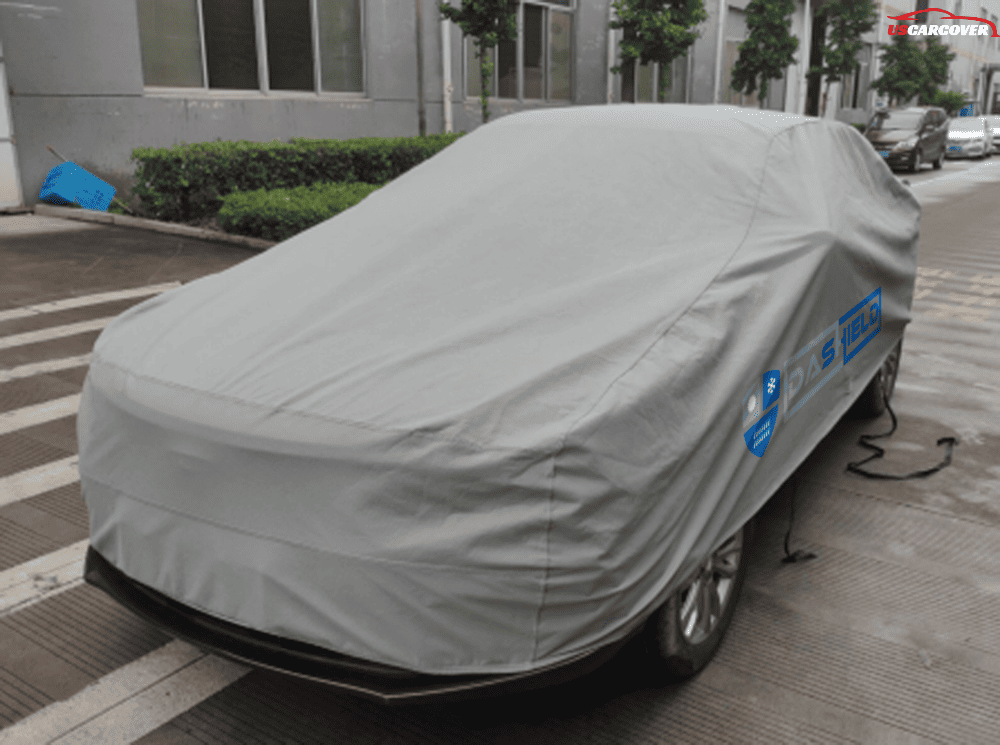
5. Is it necessary to use a storage box or bin for my car cover?
Using a storage box or bin is not strictly necessary but can be highly beneficial. A box or bin helps protect the cover from dust, debris, and environmental elements. Choose a box with ventilation to allow airflow and prevent moisture buildup. For added protection, you can use a breathable bag inside the box.
6. How do I know if my car cover is still effective after storage?
Inspect your car cover for any signs of damage, such as tears, fading, or wear. Check for mold, mildew, or musty odors that may indicate moisture issues. If the cover appears in good condition and shows no signs of significant wear or damage, it should still be effective. Regular inspections and proper storage will help ensure its continued effectiveness.
By addressing these frequently asked questions, you can ensure that you maintain the optimal condition of your car cover and provide your vehicle with the best protection possible.
